Pug Separation Anxiety: 7 Signs, Causes & Fix
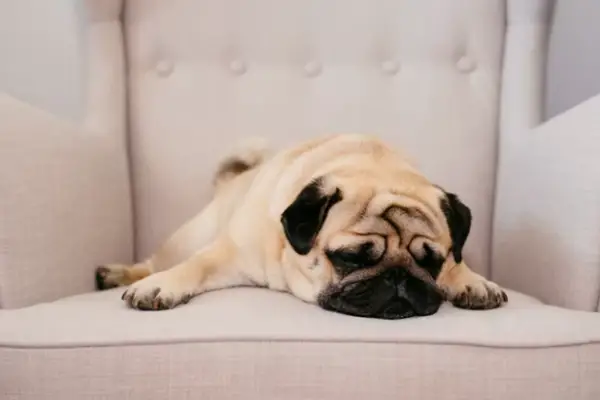
Pugs are popular dogs loved by everyone because of its personalities, so join me let’s discuss pug separation anxiety!
We will look at some activities or circumstances that may trigger off or cause separation anxiety in pugs, we will also look at the signs of separation anxiety in pugs.
We will talk about some common ways to fix and prevent pug separation anxiety, so if you are ready, let’s rock and roll with the information on pug separation anxiety!
Pug separation anxiety is a behavior problem that happens when a pug is left alone for an extended amount of time without being supervised, and it results in excessive barking, biting, and aggression.
Separation anxiety in pugs manifests itself in biting, nipping, barking, self-isolation, destructive chewing, and other behaviors.
Let’s first look at the signs…
Signs of Pug separation anxiety
Here are the most prevalent separation anxiety symptoms in Pugs that pug owners should be aware of and monitor:
1. Chewing things
One of the most common symptoms of pug separation anxiety is the destructive chewing of furniture or valuables in the absence of their owners.
This is primarily because they have nothing else to do, and they are left with lots of energy which leads to other behavior issues like barking.
Even if you have provided chew toys for your pug, when the pug is bored, lonely, depressed, or frustrated with being alone, they can chew items to relieve themselves.
If you return home and find out that your pug is chewing things, don’t ignore it as long as your pug is not in its teething stages.
2. Crying or whining on owner’s departure
Since separation anxiety in dogs can manifest immediately on the owner’s departure, a pug with separation anxiety is bound to cry and whine on the owner’s departure.
When your pug starts crying or whining when you are ready to leave, this means the pug is not comfortable being alone.
If you keep ignoring your pug crying or whining when you are leaving, it will bounce back on you, because the pug may develop unwanted behaviors.
3. Coprophagia when left alone
The condition coprophagia occurs when a pug defecates in the house and then eats it. In dogs, it’s frequently an indication of separation anxiety.
When most pugs are left alone and upset, this is a common occurrence, but there may be other medical complications.
Whether it’s urine or excrement, it’s not unusual for your pug to use the toilet while you’re gone.
When your pug is apart from you or surfer separation anxiety, he or she may cause havoc in your home by pooping and eating the waste.
4. Frequent potty accidents
If your pug has been housebroken but continues to have accidents when you leave the house and return home to find them.
This is a clear indication that your pug is concerned about you while you’re gone, and if the problem isn’t handled, it will only become worse.
If your puppy or adult pug becomes terrified and could lose control of his bladder due to anxiety, this can lead to potty accidents in your absence.
You can try to avoid this symptom or just cure the underlying cause of your dog’s anxiety, regardless of how unpleasant it is.
5. Scratching of doors or walls
When pugs are separated from their owners, they often suffer anxiety and misery, which can lead to clawing at doors and walls.
If your pug has separation anxiety, you’ll notice him clawing at the exit door as you leave for work.
You may also see your pug scratching at the walls, which is a sign of anxiety brought on by being alone.
Your pug’s separation anxiety is generating annoyance if you return home to find scratches on your walls or doors.
6. Self-mutilation
The meaning of pug self-mutilation is the act of inflicting injury or disfigurement in your pug’s own body.
Self-mutilation specifically is the act of purposely hurting itself especially as a symptom of mental or emotional disturbance.
If you come home and find out blood or injuries on your pug, even if your pug is in a crate, don’t ignore or rule out separation anxiety.
Depression and frustration can push your pug to injure itself, however, there are some other medical reasons for self-mutilation.
7. Howling and barking on owner’s departure
Because of dread, frustration, stress, tension, and loneliness, most dogs with separation anxiety will bark incessantly, which can be an issue for both you and your neighbors.
Separation anxiety can develop over time in some dogs, or it might appear minutes after the owner leaves.
As a result, you should be worried if your dog begins to bark significantly more than usual when you leave or enter.
If your dog starts barking or howling whenever you leave the house, look for additional indicators of separation anxiety.
For more signs of separation anxiety in dogs, check out this post.
Let’s look at some common causes of separation anxiety in pugs.
Causes of separation anxiety in pugs
The following are some of the factors that have been connected to the development of separation anxiety in Pugs:
1. Leaving your pug unsupervised
Separation anxiety in pugs is caused by being left alone unsupervised for an extended amount of time, and canines must be educated to stay alone.
In summary, you shouldn’t adopt a pug if you plan to be away from home all of the time, because dogs are among the finest human friends who want human connection.
When pugs are left alone at home with no work or mental stimulation, they develop separation anxiety.
Even while most dog breeds can stay at home for extended periods of time before developing separation anxiety, you should never leave your pug at home without a task for him to complete.
2. Too much attachment to only one person
If you have a family of three people, a father, mother, and perhaps a sister, and you get a dog, and only one of the family members looks after the dog, the dog may have separation anxiety when the family member is not around.
In this case, make sure you show your affection to all of your family members in your home and allow your family members to walk the dog throughout the workout.
Grooming should not be limited to one person since the dog might get overly connected to that person if that person exclusively follows the dog’s wishes.
The same is true for feeding; allow everyone to participate in feeding the dog, rather than just one person, because the dog may become accustomed to that one person feeding him over time.
If you allow your dog to become used to one person, each time that person attempts to leave, the dog will become uneasy and begin barking, indicating separation anxiety.
3. Inability to hear or poor vision
We all know how much Pugs like human connection; in fact, some dogs will follow their owners from room to room.
When a pug develops hearing or vision problems, they may feel as if they are unable to engage with their owners due to their health.
If your pug is unable to hear your voice or see what is going on around him, he may develop separation anxiety.
Even when you are around, the pug feels alone because of these health issues.
4. Insufficient mental stimulation
There’s no denying that a lack of mental stimulation or exercise in pug can lead to hostility or even fat over time.
If you don’t give your pug anything to do to keep him cognitively occupied, he may feel alone and may develop separation anxiety.
This is most common in pets whose owners are frequently on the go or who work 9 to 5.
Your pug will never be bored or lonely if you give him a variety of mental stimulation activities, which is a wonderful formula for separation anxiety.
Always keep in mind that if pugs are left alone with no work or form of exercise, they will build up a lot of energy and cause problems for their owners.
5. Being abandoned
We all know that caring for a pug isn’t always a laugh, especially when looking at it from a financial standpoint.
Keeping up with everything a pug requires, including feeding, grooming, doctor visits, and a daily walk, is not easy, which is why you should not have a dog unless you are prepared to take on the responsibility.
This is why individuals dump their pug on the street because they are unable to keep up, or because they are unable to relocate with their pug.
Separation anxiety is a natural result of abandoning a pug, especially if the pug has nowhere to go or no one to be with.
6. Making a big deal out of departure
If you believe your dog cannot read your energy and emotions, you are mistaken.
When you leave or come home, don’t make a big deal out of it, since this will make your dog uneasy and can easily induce separation anxiety.
When you leave or return, keep things simple as normal; large kisses and embraces, on the other hand, generate anxiety in dogs.
When you get home or wish to depart, go about your usual routine.
Here are more causes of separation anxiety in dogs you should check out.
Let’s go to the most important part which is how to prevent or fix separation anxiety in Pugs.
How to prevent or fix separation anxiety in Pugs
Here are some of the most frequent and suggested methods for coping with separation anxiety in Pugs:
1. Create a safe and calming spot
This teaches the dog to go to his safe space when lonely.
Every dog feels secure in its own environment, which is why the most unsocialized dogs will not allow other humans or pets into their room or bed.
To help your dog cope with separation anxiety, establish a reference point where he or she connects the location as quiet and pleasant.
Make sure the dog has everything he needs at the reference site, such as a chew toy or soothing music, so he can rapidly recognize it as a secure place.
You can occasionally join your dog in the area, but you should never call the dog out of his safe spot; instead, let the dog come out on its own terms.
2. Invest time in proper crate training
This may sound absurd, but believe me when I say that it works when done correctly; good crate training sessions can assist a pug with separation anxiety, but not persistent worry.
Crate training is a popular puppy training strategy that can help with a variety of issues, including separation anxiety.
Crate training may provide a safe and tranquil environment for your pug when you’re gone for an extended period of time.
The goal is for the pug to link fun things like chew toys and food-releasing puzzle games with his kennel, which will encourage him to spend time there.
When Pugs are left alone, they may feel safer and more at ease, so keep an eye on your puppy’s behavior to see whether his anxiety symptoms improve or worsen.
3. Provide a window view
Providing your pug with a clean and clear window view of the outside world can go a long way toward keeping him occupied while you go about your business.
Set up a little step for your pug to climb up to the window and observe what’s going on in your neighborhood, especially if you live in a busy location during the day.
To do this, you must properly socialize your pug to prevent them from barking at humans or other pets they see through the window, as well as making the window easily accessible.
4. Invest in anti-anxiety products
You may need to give your dog medication to control them calmly if they grow upset when you leave. Your dog can benefit from anti-anxiety drugs.
A veterinarian can assist you and your dog if you and your dog are unable to resolve your dog’s behavioral issues through changes or training.
Before you leave, talk to your veterinarian about what drugs you may give your dog to help them relax.
Get anti-anxiety medication from your veterinarian and spend more time with your dog to completely remove separation anxiety.
5. Make time for your pug
Exposing your pug’s brain to a range of stimuli, releasing energy, and interacting with other dogs or people keep it active.
If your pug is naturally enthusiastic, participate in sports with them, such as agility training.
You’ll strengthen your ties while also enhancing your health and those of your loved ones.
Treasure hunt is a fun activity to play with your pug while you’re away.
You might buy a huge bag of treats and hide them across your dog’s territory; this will keep your pug busy and on the lookout all day.
Again, moderation is key, since too many treats may be dangerous. Separation anxiety can be alleviated by scheduling time to play fetch with your Pug.
6. Turn on your TV or radio on before leaving
Another common way for preventing pug separation anxiety is to train them to associate peace with watching TV or dog shows.
To help your pug relax and watch while you’re gone, you may show them a selection of dog shows.
Get as many dog movies as you can and let your pug choose which ones will keep them engaged and quiet.
While you’re doing something else, teach your pug to sit and watch dog programs on TV.
Therefore, your pug will enjoy exciting dog shows while you are gone and remain calm.
Read more about how to fix separation anxiety in dogs.
I hope your concerns about pug separation anxiety were resolved with the information provided on this page.

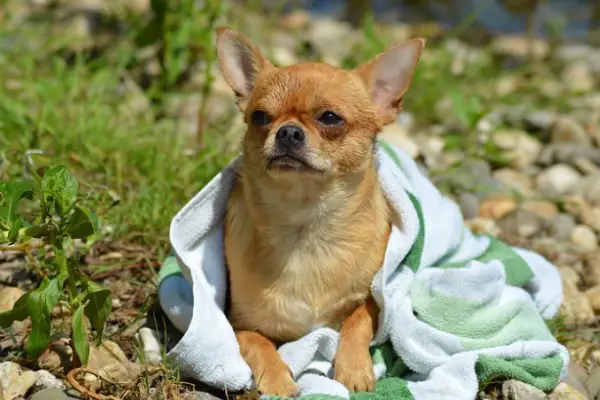
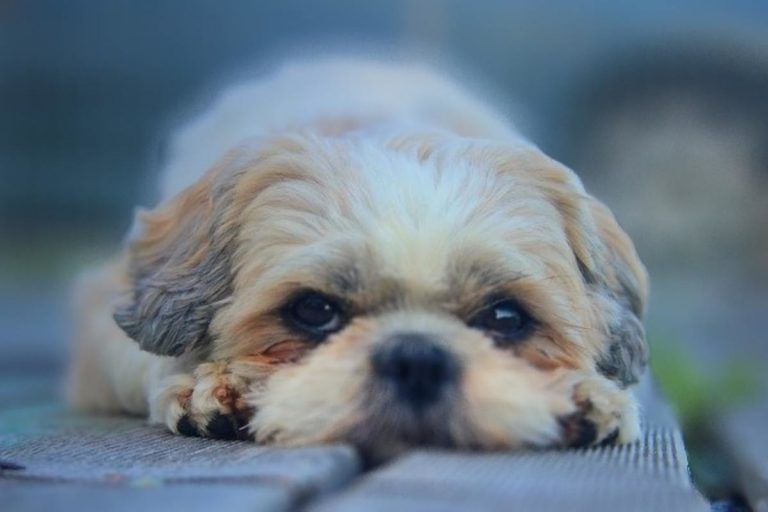
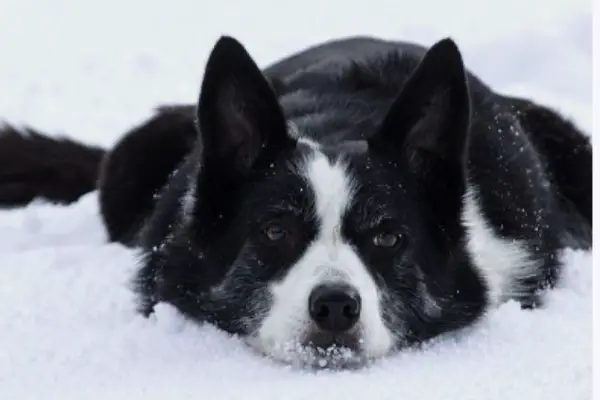
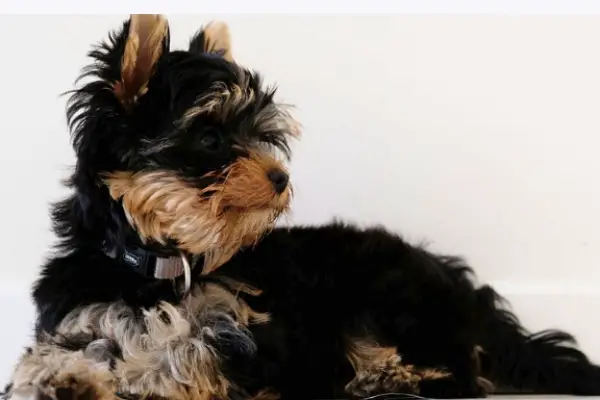

![Dog Paw Infections [Causes, Signs & More] Dog Paw Infections](https://petcreeks.com/wp-content/uploads/2023/09/natalie-parham-1dQuP79kLfg-unsplash-1.jpg)